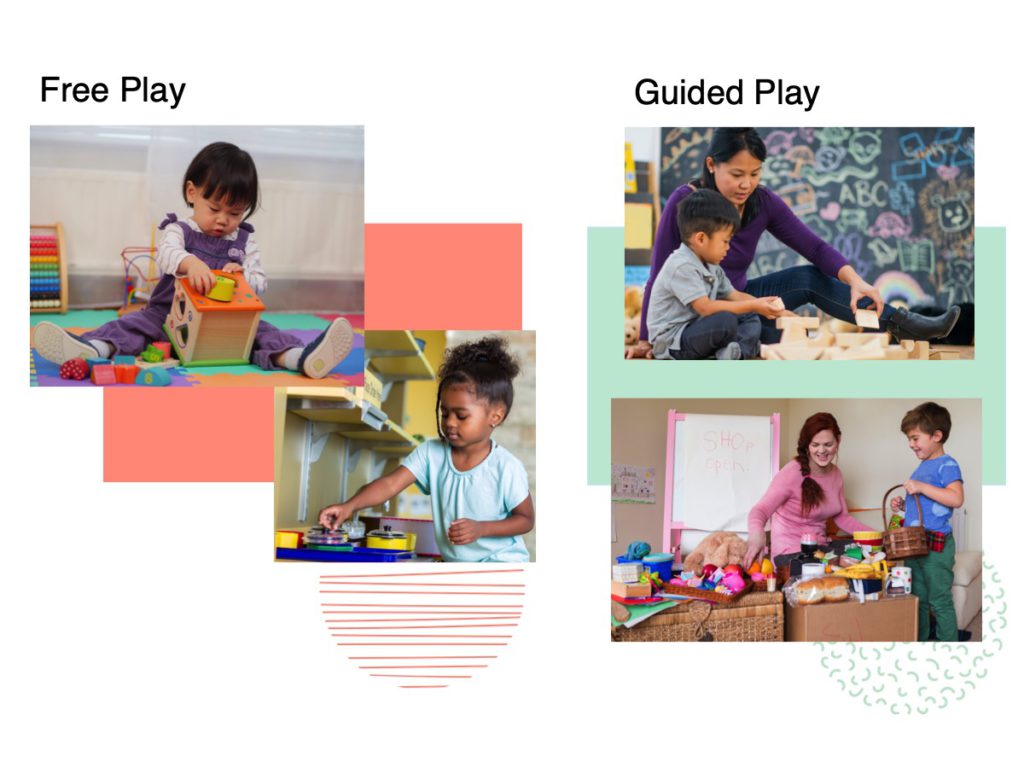
Play can describe everything from unstructured activities to activities that have full support from an adult. But all play is active and fun!
Free play refers to spontaneous, unstructured play. Children choose what and how to explore. They are actively engaged, rather than watching another person play or teach. A baby might engage in free play by banging blocks together. A toddler might insert blocks into a shape sorter or make tea in her play kitchen.
Guided play is like free play, in that it’s focused on what the child is interested in. But unlike free play, an adult is present to facilitate a playful learning experience. That doesn’t mean that adults take over the play. Instead, adults act as play partners and curious onlookers. They take on a subtle role by asking questions to help children think. When playing pretend store, you could ask, “How many more tomatoes do you need for your sauce?” They also make suggestions about what else they might try. You might suggest a smaller or different shaped block will keep the tower from toppling over.
Both types of play benefit math learning in their own way. Let’s look at some examples of how children learn about math during free and guided play.
-
- Free play
- is spontaneous, unstructured play that is child-directed
- Guided play
- is like free play, in that it's focused on what the child is interested in. But unlike free play, an adult facilitates a playful learning experience